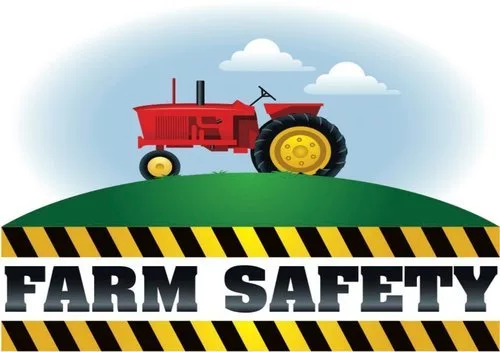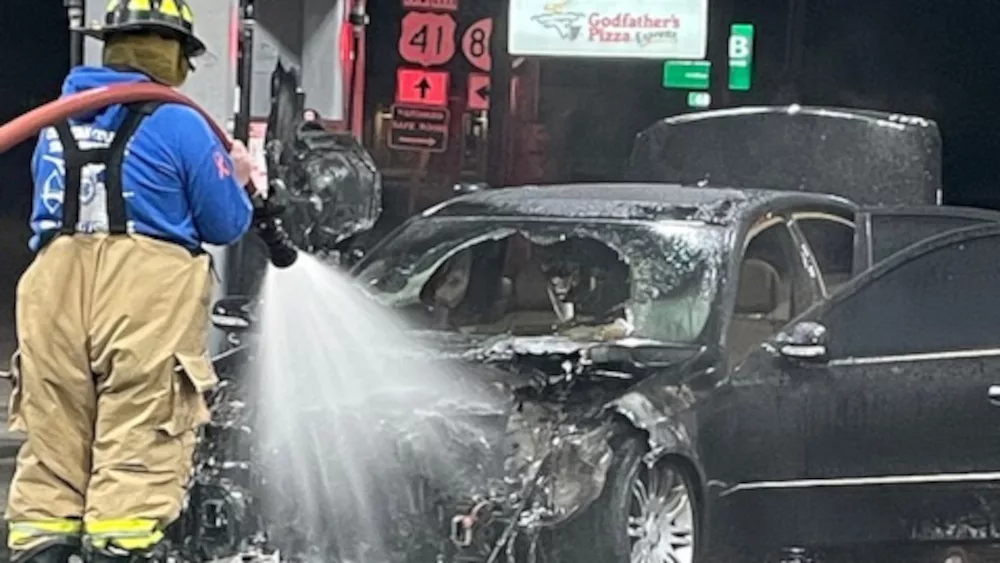Mark Purschwitz, UK extension professor and agricultural safety and health specialist
Fall harvest season is a busy time for Kentucky farmers and their families. It also is a peak season for agricultural injuries and an especially important time for farm families to pay attention to safety.
Take time to talk to workers about safety. You need to be sure all workers are trained and physically capable of operating equipment and that they understand the safety procedures.
Long working hours can lead to fatigue and stress, making you less alert to potential safety hazards. Take breaks when operating equipment for an extended period of time. If possible, trade off with other workers for a change of pace.
Dress appropriately for the job. Avoid loose clothing, jackets with dangling strings and sweatshirts that could get entangled in moving equipment.
Entanglement in moving parts, especially power take-offs or other chain and belt drivers, is a major fall harvest hazard. Inspect machinery and equipment to be sure shields and guards on moving parts are in place and in good repair. Replace ineffective or missing safety equipment.
Before getting off equipment, disengage the power and wait for moving parts to completely stop. When possible, shut off the engine.
It is always a good idea to take the ignition key with you so another person does not unexpectedly start equipment while you are performing maintenance or repair. If you are working under any piece of equipment, such as a header unit, always use the jack stand or hydraulic cylinder locks to prevent it from suddenly falling and pinning you. Be sure all safety locks are operational.
A pinhole-size hydraulic leak can cause severe tissue damage. If you are injected with oil from a hydraulic leak, immediately seek medical assistance. The oil must be surgically removed, and delays can result in serious infections and possible amputations.
Always use paper or cardboard to check for hydraulic leaks.
Tractor overturns are the leading cause of farm deaths. To prevent these tragedies, equip older model tractors with a roll-over protective structure. Most tractors manufactured after the late 1960s or early 1970s can be equipped with a ROPS for a reasonable price.
Make it a habit to use the seat belt to ensure you remain inside the zone of protection provided by the ROPS or safety cab. The seat belt also will keep you from being thrown off the tractor if you hit an obstacle. Being thrown off the tractor and run over is the second leading cause of tractor deaths in Kentucky.
Never allow any extra riders on tractors or equipment. Keep bystanders away from operating equipment. Also, be aware of people who may have come into the area. Always check around equipment before starting or moving it.
Carry a fire extinguisher on all tractors and self-propelled equipment, especially combines. Periodically check extinguishers to be sure they are pressurized and in good condition.
To prevent fires on combines, be sure equipment is clean and hoses and fuel systems are in good shape and not leaking. Remove trash and debris around engine components.
Check for clearances with overhead power lines when operating or moving tall machines, because contact may result in electrocution. Moving portable augers around overhead power lines is especially hazardous so always lower them first.
When filling silos, watch for the bleach-like odor that indicates silo gas. This yellowish brown gas is heavier than air and will settle on the silage surface and may flow down the chute into adjacent livestock areas. Close any doors leading to livestock areas, keep the base of the silo chute well ventilated and do not enter a silo during the first two weeks.
Farm vehicles on public roads are annually involved in thousands of injury accidents in the United States, and more than 200 collisions involving farm machinery on public roads occur in Kentucky every year. Thus, people driving farm machinery and those driving vehicles should be especially careful and watchful.
Keep slow-moving-vehicle emblems and extremity markings clean and bright to help motorists notice equipment. Replace faded SMV emblems and check headlights, taillights and flashing lights for satisfactory operation.
To alert on-coming drivers, use reflectors or reflective tape when the edges of towed equipment extend beyond the left side of a tractor. If a tractor has mirrors, keep them clean and adjusted for the driver to watch for approaching motorists. When possible, pull completely off the road to let a line of traffic pass.
Since it may be difficult to anticipate the operational intentions of farm machinery on the roadway, other drivers need to watch for unmarked field entrances or other places the driver might be planning to enter. A tractor may need to move to the right to complete a left turn so do not assume the driver wants you to pass when moving to the right side. Pass only in a designated passing zone or when the other driver signals and completely pulls off the road.
For more information on farm safety, contact the Trigg County Cooperative Extension Service office.
Educational programs of the Kentucky Cooperative Extension Service serve all people regardless of economic or social status and will not discriminate on the basis of race, color, ethnic origin, national origin, creed, religion, political belief, sex, sexual orientation, gender identity, gender expression, pregnancy, marital status, genetic information, age, veteran status, or physical or mental disability.






